Short T.A. Electric Power Distribution Handbook
Подождите немного. Документ загружается.

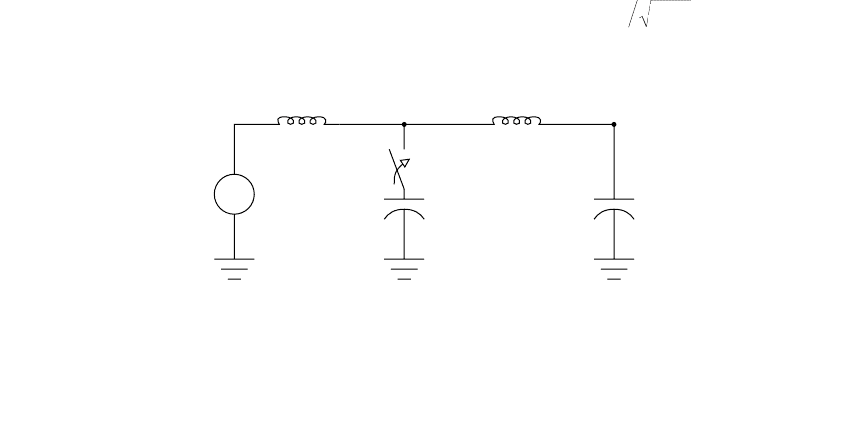
548
Electric Power Distribution Handbook
back to the restriking scenario — when the gap breaks down again, the
voltage transient can oscillate around the system voltage at a much higher
level. Capacitor switches should not and normally do not regularly restrike
or prestrike, and voltages rarely escalate, but some failures can be traced to
these switching problems.
Capacitor switching is not the only switching transient that can occur on
a distribution circuit. Line energization can cause transients, as can faults.
Both of these are normally benign. Walling et al. (1995) tested load-break
elbows and switching-compartment disconnects. Such switching results in
repeated arc restrikes and prestrikes, but the overvoltages are not particu-
larly severe because the oscillations dampen out without clearing at a tran-
sient zero crossing (no escalation of the voltage). With a maximum
overvoltage of 2.44 per unit, Walling et al. do not expect consequential effects
on underground cable insulation.
11.2.1 Voltage Magnification
Certain circuit resonances can
magnify
capacitor switching transients at loca-
tions away from the switched capacitor bank (Schultz et al., 1959). Magnifi-
cation often increases a transient’s peak magnitude by 50%, sometimes even
by 100%. Figure 11.8 shows the classic voltage magnification circuit; two sets
of resonant circuits interact to amplify the transient that occurs when
C
1
is
switched. The most severe magnification occurs when:
•
C
1
is much larger than
C
2
.
• The series combination of
L
1
and
C
1
resonates at about the same
frequency as
L
2
and
C
2
.
• There is little series or shunt resistance to dampen the transient.
If
C
1
is much larger than the series impedance
L
2
+
C
2
, switching
C
1
in will
initiate a transient that oscillates at a frequency of . If the
downstream pair,
L
2
and
C
2
, happen to have a natural resonant frequency
FIGURE 11.8
Voltage magnification circuit.
w
111
1= LC
V
1
V
2
L
1
L
2
C
1
C
2
1791_book.fm Page 548 Monday, August 4, 2003 3:20 PM
(C) 2004 by CRC Press LLC
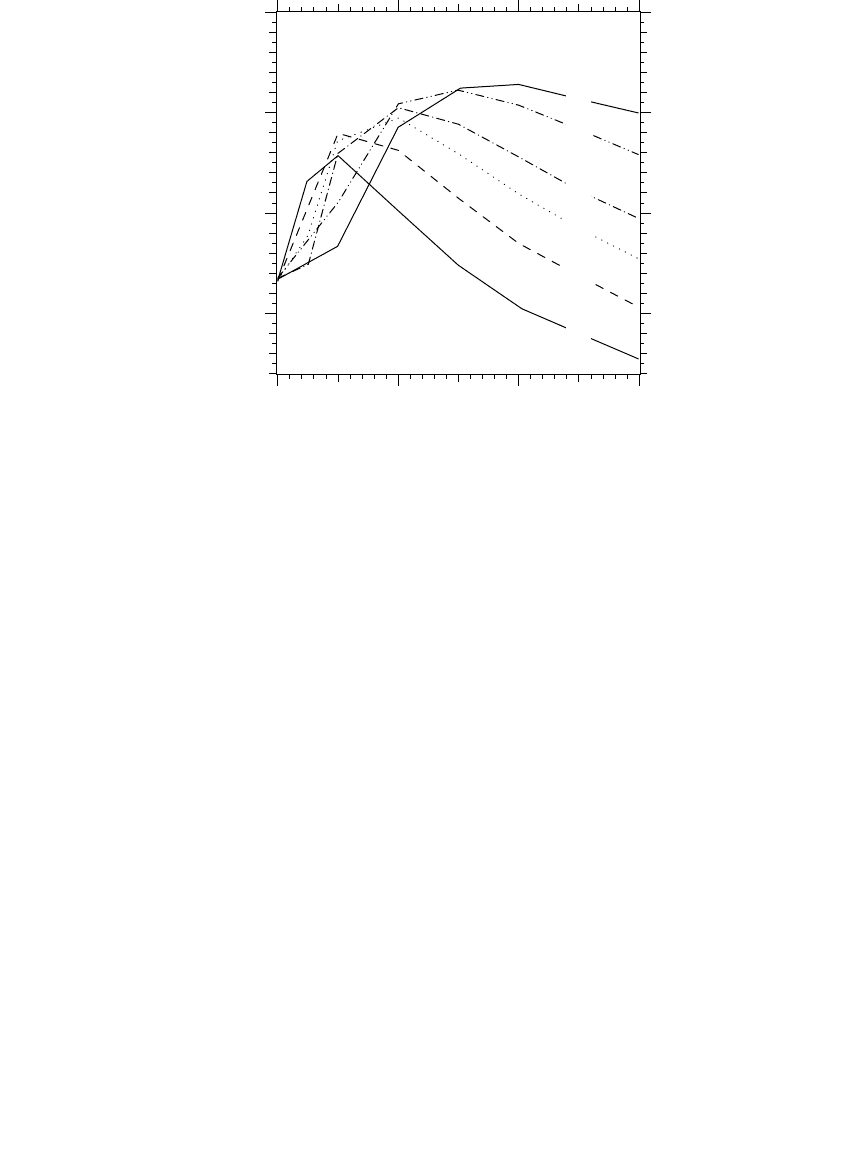
Other Power Quality Issues
549
near that of
w
1
, oscillation between
L
1
and
C
1
will pump the natural oscillation
between
L
2
and
C
2
, causing higher voltages at
V
2
.
Consider a 10-Mvar substation capacitor and a 1200-kvar line capacitor on
a 12.5-kV circuit with a substation source impedance of 1
W
at 60 Hz. Under
these conditions, the loop resonances match when
X
L
2
is 8.3
W
, or when the
capacitor is about 13 mi from the substation (given typical line impedances).
For maximum magnification, the ratio of the inductive impedances equals
the inverse of the capacitor kvar ratios (
kvar
1
/
kvar
2
=
X
L2
/
X
L
1
).
In another common scenario, low-voltage power factor correction capaci-
tors magnify transients from switched utility capacitors (McGranaghan et
al., 1992). In this scenario,
L
2
is primarily determined by the customer’s
transformer, and
L
1
is determined by the system impedance to the capacitor
bank. Their parametric study found that a wide combination of local and
switched utility capacitors can magnify transients as shown in Figure 11.9.
Larger utility banks are more likely to generate transients that are magnified
on the low-voltage side. Resistive load helps dampen these transients; facil-
ities with primarily motor loads have higher transients. Magnified transients
can also inject considerably more energy into low-voltage metal-oxide arrest-
ers than they are typically rated to handle (especially for switching large
utility banks).
FIGURE 11.9
Transient magnitude for various sizes of switched distribution feeder capacitors and low-
voltage capacitors. (From McGranaghan, M. F., Zavadil, R. M., Hensley, G., Singh, T., and
Samotyj, M., “Impact of Utility Switched Capacitors on Customer Systems — Magnification at
Low Voltage Capacitors,”
IEEE Trans. Power Delivery
, 7(2), 862-868, April 1992. With permission.
©1992 IEEE.)
1.2
1.8
2.4
3.0
4.5
6.0
switched
capacitor
Mvar
0 200 400 600
1.5
2.0
2.5
3.0
Local capacitor size, kvar
Per-unit peak local voltage
1791_book.fm Page 549 Monday, August 4, 2003 3:20 PM
(C) 2004 by CRC Press LLC

550
Electric Power Distribution Handbook
Transients from switched capacitor banks on the high-side of the substation
bus can magnify at distribution capacitors or customer-owned capacitors
(Bellei et al., 1996). Again, a wide combination of capacitor ranges can mag-
nify surges.
11.2.2 Tripping of Adjustable-Speed Drives
The main power quality symptoms related to distribution capacitor switch-
ing is shutdown of adjustable-speed drives (ASD) and other sensitive process
equipment. The front-end of an adjustable-speed drive rectifies the incoming
line-to-line ac voltages to a dc voltage. The rectifier peak-tracks the three
incoming ac phases, so a switching surge on any phase charges up the dc
bus. Because the electronics fed by the dc bus are sensitive to overvoltages,
drives normally have sensitive dc bus overvoltage trip settings, typically 1.2
per unit with some as low as 1.17 per unit. It does not take much of a transient
to reach 1.2 per unit. At such low sensitivities, the system and customer
voltage regulation plays an important role. If the voltage at the drive is at
1.05 per unit when the capacitor switches, the transient does not have to
oscillate much to reach 1.17 or 1.2 per unit. These voltages are on the dc bus,
which is fed by the line-to-line voltage. The actual line-to-ground transients
on the distribution system normally need to be higher than 1.2 per unit to
raise the drive dc link voltage to 1.2 per unit (and this depends on the
customer transformer connection).
McGranaghan et al. (1991) used transient simulations to analyze several
variables impacting the tripping of drives:
•
dc capacitor
— If the drive’s rectifier has a dc capacitor, it impacts
the drive’s sensitivity to switching transients. Drives with larger dc
capacitor take longer to charge up, which makes them less likely to
trip on overvoltage.
•
Switch closing
— The worst transients are when the capacitor
switches all switch at the peak of the waveform.
•
Capacitor size
— Larger capacitor banks cause a more severe tran-
sient. For the case McGranaghan et al. (1991) analyzed, capacitor
banks less than 1200-kvar banks were less likely to cause drive
tripouts (see Figure 11.10).
•
Local power-factor correction capacitors
— If the facility has local capac-
itors, magnification of the incoming transient makes the drive more
likely to trip. End users can avoid this problem by configuring their
power-factor correction capacitors as tuned filters (McGranaghan et
al., 1992).
Locally, the addition of chokes (series inductors) connected to the input
terminals of the adjustable-speed drive reduces the voltage rise on the drive’s
1791_book.fm Page 550 Monday, August 4, 2003 3:20 PM
(C) 2004 by CRC Press LLC
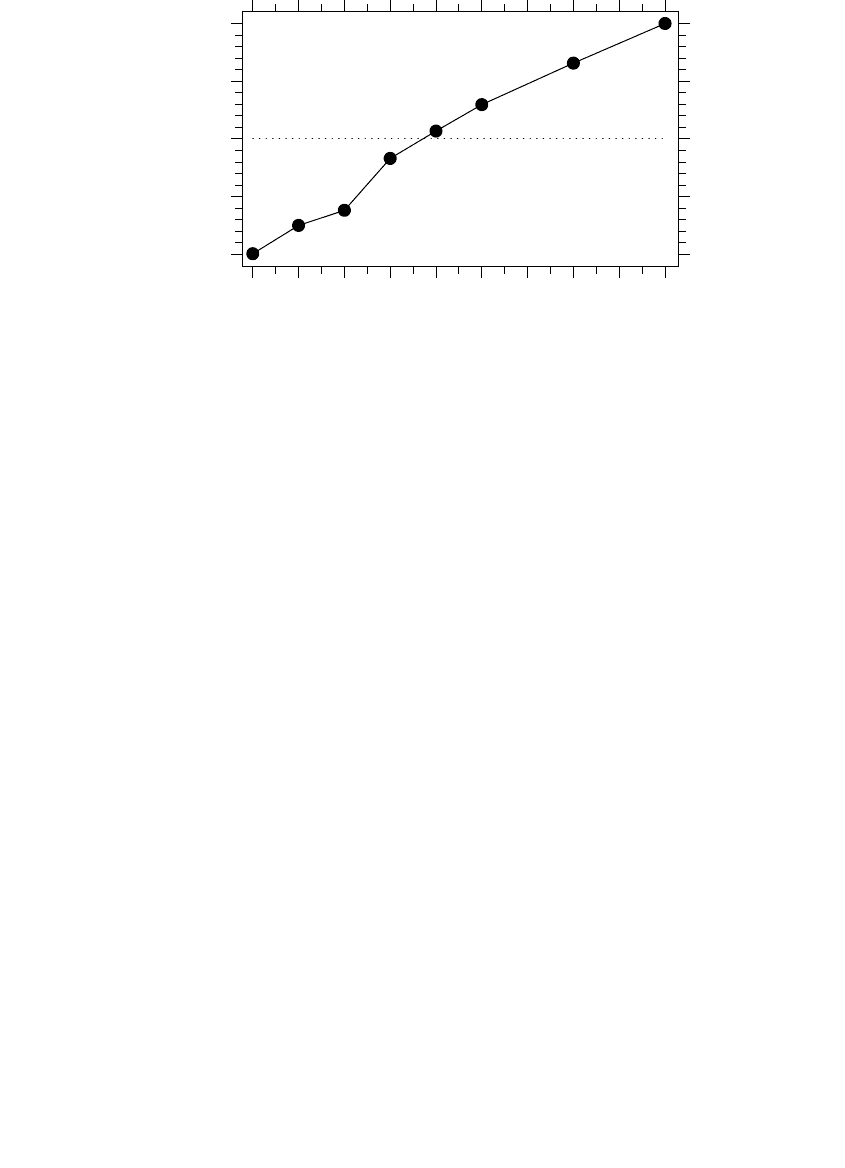
Other Power Quality Issues
551
dc bus. Standard sizes are 1.5, 3, and 5% impedance on the drive’s kVA
rating. A parametric simulation study of transmission-switched capacitors
found that a 3% inductor greatly reduced the number of drive trips, but a
number of transients can still trip some drives (depending on the size capac-
itor switched and many other variables) (Bellei et al., 1996).
11.2.3 Prevention of Capacitor Transients
Switched capacitors cause the most severe switching transients. Utility-side
solutions to prevent the transient include zero-voltage closing switches or
pre-insertion resistors or reactors. Zero-voltage closing switches time their
closing to minimize transients. Switches with pre-insertion resistors place a
resistor across the switch gap before fully closing contacts; this reduces the
inrush and dampens the transient. Any of these options are available for
substation banks, and utilities use them often, especially in areas serving
sensitive commercial or industrial customers.
For distribution feeder banks, the zero-crossing switch controllers are the
only available option for reducing transients. These controllers time the
closing of each switch contact to engage the capacitor at the instant where
the system voltage is zero, or very close to zero. An uncharged capacitor
closing in at zero volts causes no transient.
The switches time the initiation of the switching so that by the time the
switch engages, the system voltage is at zero. Since the capacitor should
have no voltage, and it is switched into the system when it has no voltage,
FIGURE 11.10
dc voltage on an adjustable-speed drive from switching of the given size capacitor bank (with
no local power-factor correction capacitors). (From McGranaghan, M. F., Grebe, T. E., Hensley,
G., Singh, T., and Samotyj, M., “Impact of Utility Switched Capacitors on Customer Systems.
II. Adjustable-Speed Drive Concerns,”
IEEE Trans. Power Delivery
, 6(4), 1623-1628, October 1991.
With permission. ©1991 IEEE.)
Typical trip voltage
1.0
1.1
1.2
1.3
1.4
300 600 900 1200 1500 1800 2400 3000
Capacitor size, kvar
Per-unit dc link voltage
1791_book.fm Page 551 Monday, August 4, 2003 3:20 PM
(C) 2004 by CRC Press LLC

552
Electric Power Distribution Handbook
the switching does not create a transient. Timing and repeatability are impor-
tant. One popular 200-A vacuum switch takes 0.015 sec to close and has a
repeatability of
±
3 degrees (
±
0.14 msec). Each phase is controlled separately.
Other claimed benefits of zero-crossing switches include increased
capacitor and switch life, reduction of induced voltages into the low volt-
age control wiring, and reduction of ground transients. Zero-crossing
switches also eliminate capacitor inrush, including the much more severe
inrush found when switching a capacitor with a nearby capacitor already
energized.
11.3 Harmonics
Distortions in voltage and current waveshapes can upset end-use equipment
and cause other problems. Harmonics are a particularly common type of
distortion that repeats every cycle. Harmonically distorted waves contain
components at integer multiples of the base or
fundamental
frequency (60 Hz
in North America). Resistive loads like incandescent lights, capacitors, and
motors do not create harmonics — these are passive elements — when
applied to 60-Hz voltage; they draw 60-Hz current. Electronic loads, which
create much of the harmonics, do not draw sinusoidal currents in response
to sinusoidal voltage.
A very common harmonic producer is the power supply for a computer,
a switched-mode power supply that rectifies the incoming ac voltage to dc
(see Figure 10.21). The bridge rectifier has diodes that conduct to charge up
capacitors on the dc bus. The diodes only conduct when the ac supply
voltage is above the dc voltage for just a portion of each half cycle. So, the
power supply draws current in short pulses, one each half cycle. Each pulse
charges up the capacitor on the power supply. The current is heavily dis-
torted compared to a sine wave, containing the odd harmonics, 3, 5, 7, 9,
etc. The third harmonic may be 80% of the fundamental, and the fifth may
be 60% of the fundamental. Figure 11.11 shows examples of the harmonic
current drawn by switched-mode power supplies in computers along with
other sources of harmonics.
Other very common sources of harmonics are adjustable-speed drives and
other three-phase dc power supplies (see Figure 10.28). These rectify the
incoming ac waveshape from each of the three phases. In doing so, drives
create current with harmonics of order 5, 7, 11, 13, etc. — all of the odd
harmonics except multiples of three. In theory, drives create a fifth harmonic
that is one-fifth of the fundamental, a seventh harmonic that is one-seventh
of the fundamental, and so forth. Other harmonic-producing loads include
arc furnaces, arc welders, fluorescent lights (with magnetic and especially
with electronic ballasts), battery chargers, and cycloconverters.
1791_book.fm Page 552 Monday, August 4, 2003 3:20 PM
(C) 2004 by CRC Press LLC
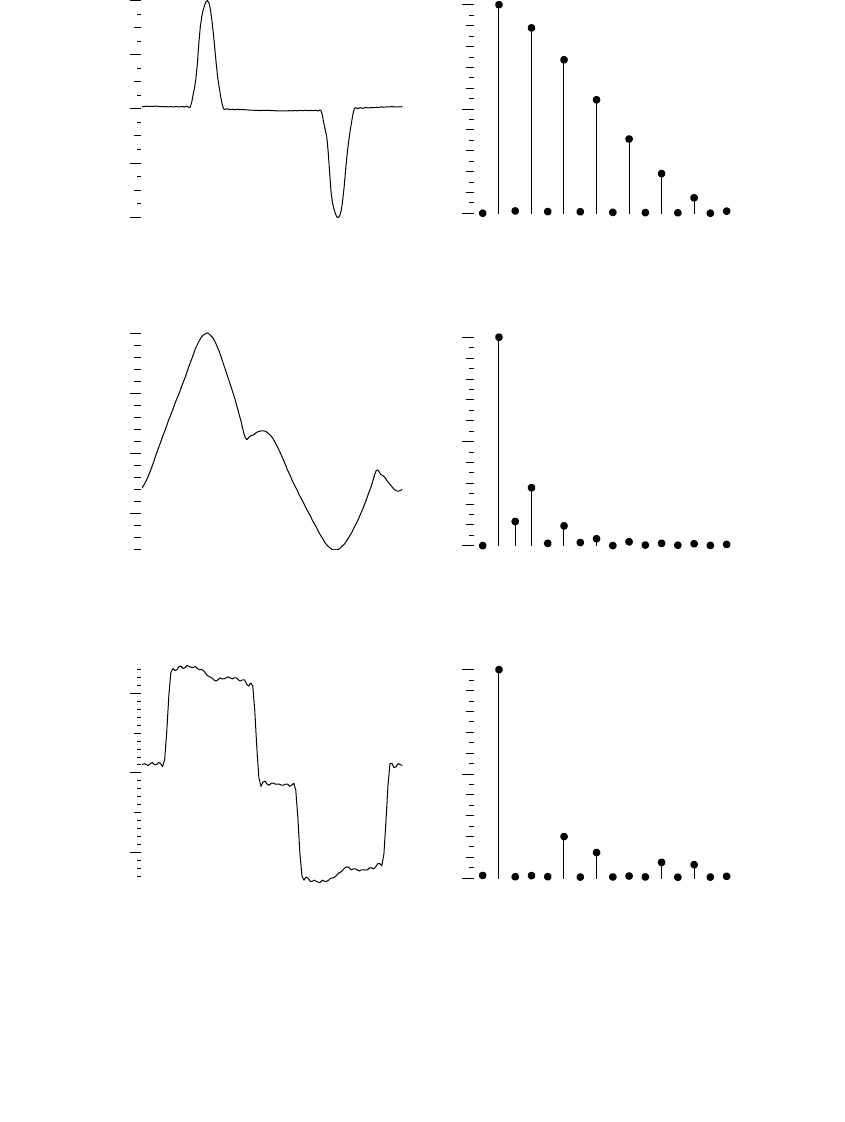
Other Power Quality Issues 553
FIGURE 11.11
Examples of harmonic-current sources. (Data from EPRI PEAC, various measurements.)
-4
-2
0
2
4
-1
0
1
2
-1
0
1
0
50
100
0
50
100
0
50
100
13579111315
13579111315
Waveforms
in per unit
13579111315
Frequency spectrums
with amplitudes in percent
3-phase adjustable-speed drive
Microwave oven
Personal computer
1791_book.fm Page 553 Monday, August 4, 2003 3:20 PM
(C) 2004 by CRC Press LLC

554 Electric Power Distribution Handbook
Harmonic currents and harmonic voltages are interrelated. Commonly,
nonlinear loads are modeled as ideal current injections (“ideal” meaning
they inject the same current regardless of the voltage). An nth-harmonic
source driving current through an impedance R+jX raises the nth voltage to
V
n
= R ◊ I
n
+ jn
◊
X
◊
I
n
Utility distribution systems are normally stiff enough (low Z) that they
can absorb significant current distortions without voltage distortion.
Harmonics have been heavily researched and studied, probably more so
than any other power quality problem. Despite the attention, harmonic
problems are uncommon on distribution circuits. Most harmonic problems
are isolated to industrial facilities; end-use equipment produces harmonics,
which cause other problems within the facility.
We can characterize harmonics by the magnitude and phase angle of each
individual harmonic. Normally, we specify each harmonic in percent or per
unit of the fundamental-frequency magnitude. Another common measure is
the total harmonic distortion, THD, which is the square-root of the sum of the
squares of each individual harmonic. Voltage THD is
where V
1
is the rms magnitude of the fundamental component, and V
h
is the
rms magnitude of component h. The Fourier transform is used to convert one
or more waveshape cycles to the frequency domain and V
h
values.
IEEE provides a recommended practice for harmonics, IEEE Std. 519-1992,
which gives limits for utilities and for end users. Utilities are expected to
maintain reasonably distortion-free voltage to customers. For suppliers at 69
kV and below, IEEE voltage limits are 3% on each individual harmonic and
5% on the total harmonic distortion (Table 11.1). Both of these percentages
are referenced to the nominal voltage.
Current distortion limits (Table 11.2) were developed with the objective of
matching the voltage distortion limits. If users limit their current injections
according to the guidelines, the voltage limits will remain under the guide-
lines imposed on the utility (as long as no major circuit resonance exists).
The individual harmonics and the total harmonics (total demand distortion,
TDD) are referenced to the maximum demand at that point, either the 15-
or 30-min demand. Harmonic current limits depend on the facility size
relative to the utility at the interconnection point. Larger facilities — relative
to the strength of the utility at the interconnection point — are more
restricted. Likewise, a facility at a stronger point in the system is allowed to
V
V
V
THD
h
h
=
=
•
Â
2
2
1
1791_book.fm Page 554 Monday, August 4, 2003 3:20 PM
(C) 2004 by CRC Press LLC

Other Power Quality Issues 555
inject more than the same facility at a weaker point because the same injec-
tion at a weaker point creates more voltage distortion. The ratio I
sc
/I
L
deter-
mines which set of limits applies. I
sc
is the maximum short-circuit current;
I
L
is the maximum demand for the previous year.
Both the voltage and current limits apply at the point of common coupling,
the point on the system where another customer can be served. Either side
of the distribution transformer can be the point of common coupling,
depending on whether the transformer can supply other customers. The
point of common coupling is often taken as the metering point.
Harmonics can impact a variety of end-use equipment (IEEE Task Force,
1985; IEEE Task Force, 1993; Rice, 1986). Some of the most common end-use
effects are as follows:
• Transformers — Current distortion increases transformer losses and
heating, enough so that transformers may have to be derated [see
(IEEE Std. C57.110-1998)]. Dry-type transformers are particularly
sensitive.
• Motors — Voltage distortion induces heating on the stator and on
the rotor in motors and other rotating machinery. The rotor presents
a relatively low impedance to harmonics, like a shorted transformer
TABLE 11.1
Voltage Distortion Limits
Voltage Distortion Limit
Individual harmonics 3%
Total harmonic distortion (THD) 5%
Note: For a bus limit at the point of common coupling at and
below 69 kV. For conditions lasting less than 1 h, the
limits may be exceeded by 50%.
Source: IEEE Std. 519-1992. Copyright 1993 IEEE. All rights
reserved.
TABLE 11.2
Current Distortion Limits for Distribution Systems (120 V through 69 kV)
I
sc
/I
L
h < 11 11 ££
££
h < 17 17 ££
££
h < 23 23 ££
££
h < 35 34 ££
££
h TDD
< 20 4.0 2.0 1.5 0.6 0.3 5.0
20–50 7.0 3.5 2.5 1.0 0.5 8.0
50–100 10.0 4.5 4.0 1.5 0.7 12.0
100–1000 12.0 5.5 5.0 2.0 1.0 15.0
> 1000 15.0 7.0 6.0 2.5 1.4 20.0
Note: Even harmonics are limited to 25% of the odd harmonic limits above.
Current distortions that result in a dc offset are not allowed. For conditions
lasting less than 1 h, the limits may be exceeded by 50%.
Source: IEEE Std. 519-1992. Copyright 1993 IEEE. All rights reserved.
1791_book.fm Page 555 Monday, August 4, 2003 3:20 PM
(C) 2004 by CRC Press LLC
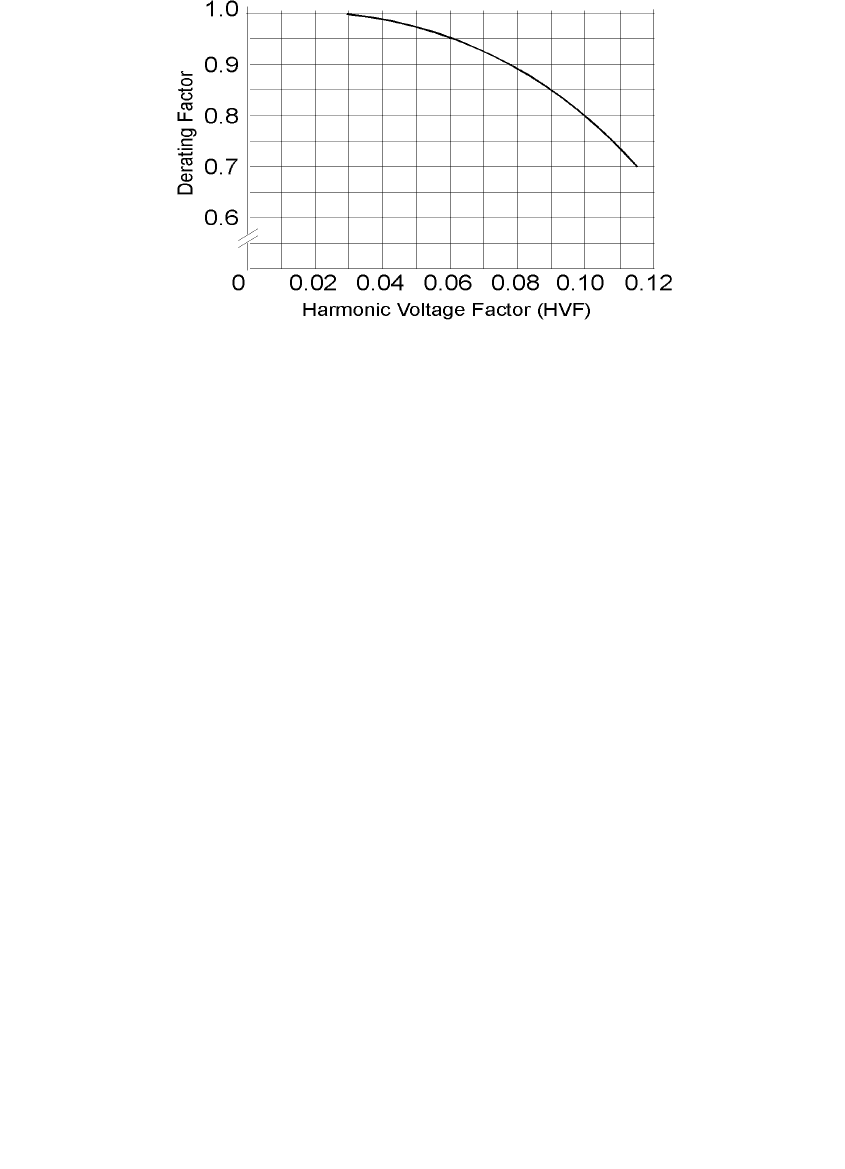
556 Electric Power Distribution Handbook
winding. The effects are similar to motors operating with voltage
unbalance, although not quite as severe since the impedance to the
harmonics increases with frequency. Figure 11.12 shows the National
Electrical Manufacturers Association’s (NEMAs) recommended
derating factor for motors running with distorted voltage.
• Conductors and Cables — Resistance increases with frequency due to
skin effect and proximity effect, particularly on larger conductors.
As an example, at the seventh harmonic (420 Hz), a 500-kcmil cable
has a resistance that is 2.36 times its dc resistance (Rice, 1986). Neu-
tral conductors in facilities are especially prone to problems; third-
harmonic currents from single-phase loads add in the neutral, which
can actually increase neutral current above that in the phase con-
ductors (EPRI PEAC Application #6, 1996).
• Sensitive electronics — Ironically, some of the main harmonic produc-
ers are also sensitive to harmonics. If an uninterruptible power sup-
ply (UPS) detects excessive distortion, it may switch to its batteries;
after the batteries run out, the critical load may drop out. Harmonics
can impact digital devices that depend on a voltage zero crossing
for timing (digital clocks being the simplest example). Excessive
harmonics can introduce additional zero crossings that can disrupt
controllers.
Most harmonic problems occur in industrial or commercial facilities. Dis-
tribution equipment is fairly immune to problems from harmonic voltages
or currents. Heating from harmonics is not normally a problem for overhead
conductors. Underground cables are more sensitive to heating. Harmonic
currents can appreciably increase cable temperatures.
FIGURE 11.12
Motor derating due to harmonics. NEMA’s harmonic voltage factor is slightly different from
THD; it includes only the odd harmonics that are not multiples of three. (From NEMA MG-1,
Standard for Motors and Generators, 1998. With permission.)
1791_book.fm Page 556 Monday, August 4, 2003 3:20 PM
(C) 2004 by CRC Press LLC
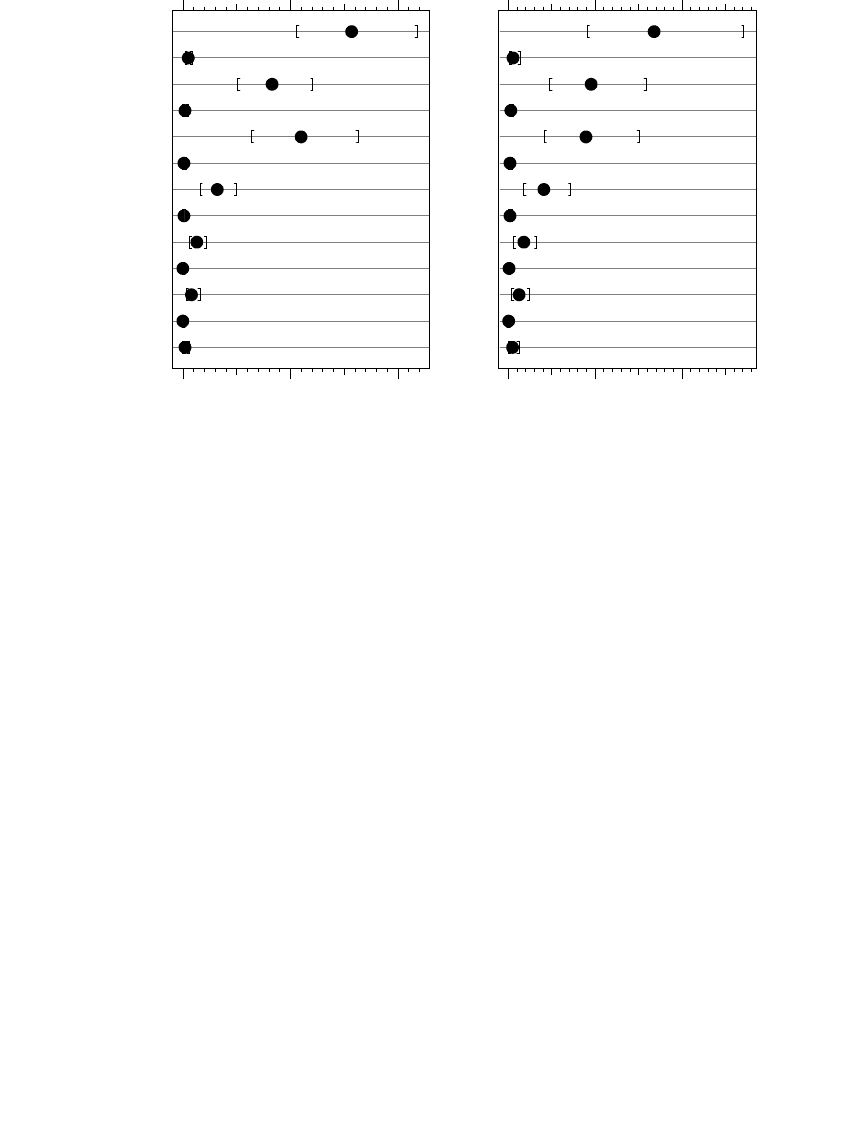
Other Power Quality Issues 557
Many harmonic problems relate to heating, either in transformers, motors,
neutral conductors, or capacitors. Because of the thermal time constants of
equipment, heat-related problems occur for sustained levels of harmonics
(usually along with heavy power-frequency loading). Heating degrades
insulation and leads to premature failure. Higher peak voltages can also
cause insulation breakdowns, with capacitors being highly sensitive.
Most distribution circuits have very little distortion, having neither voltage
distortion nor current distortion. Figure 11.13 shows average distortion mea-
sured during EPRI’s DPQ study (EPRI TR-106294-V2, 1996; Sabin et al.,
1999a). None of the DPQ sites had an average voltage THD above the IEEE
519 limit of 5% (the worst couple of sites averaged just under 4.8% THD).
And, only 4% of the DPQ sites exceeded this IEEE 519 limit more than 5%
of the time. At the DPQ sites, 95% of the time, the voltage THD was less
than 2.2%.
Substation sites had slightly lower voltage and current distortions than
those recorded at feeder sites: substation average THD = 1.37%; overall
average THD = 1.57%. Industrial feeders (defined as having at least 40% of
the load coming from industrial loads) showed only slightly higher voltage
distortion than the average for all sites.
Other monitoring studies also show fairly low harmonics. Surveys of 76
sites on the Southwestern Electric Power Company’s system found that none
FIGURE 11.13
Voltage and current distortion measured in EPRI’s DPQ study. The dot marks the mean distor-
tion for the given harmonic, and the brackets mark the 5th and 95th percentiles. (Data from
[EPRI TR-106294-V2, 1996; Sabin et al., 1999a].)
0 1 2 0 2 4
THD
2
3
4
5
6
7
8
9
10
11
12
13
Percent distortion
Harmonic
Voltage distortion
TDD
2
3
4
5
6
7
8
9
10
11
12
13
Percent distortion
Current distortion
1791_book.fm Page 557 Monday, August 4, 2003 3:20 PM
(C) 2004 by CRC Press LLC
